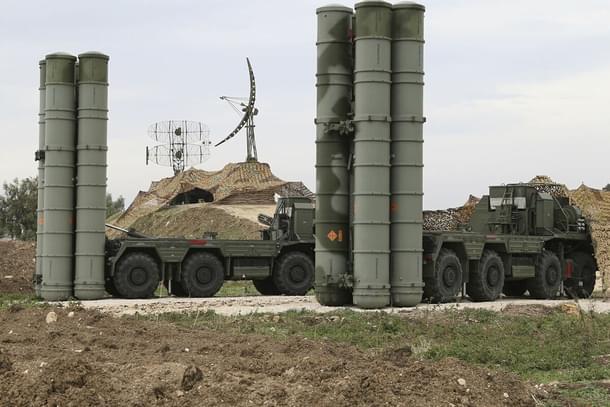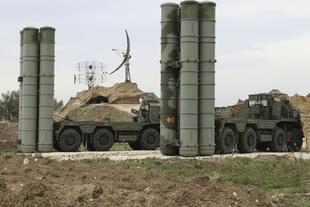News Brief
First Squadron Of S-400 Being Deployed In 'Punjab Sector' To Deal With Threats From China, Pakistan: Report
Swarajya Staff
Dec 21, 2021, 02:12 PM | Updated 02:12 PM IST
Save & read from anywhere!
Bookmark stories for easy access on any device or the Swarajya app.


The Indian Air Force (IAF) has started deploying the first squadron of the S-400 air defence missile system delivered by Russia under a deal signed in 2018, news agency ANI has said in a report.
According to the news agency's report, Russia started delivering parts of the S-400 air defence missile system earlier this month. The first S-400 unit will be operationalised in the next few weeks, it added.
"The first squadron is being deployed in the Punjab sector. The batteries of the first squadron would be capable of taking care of aerial threats from both Pakistan and China," the report said, quoting sources in the government.
The S-400 system is being delivered through the sea route and by air, and the delivery of the first squadron is likely to be complete by the end of the year.
Russia has already trained a group of Indian personnel to operate the first regiment of S-400. IAF officials have received training in Russia, and more officers and technicians will be trained within the country.
Alexander Mikheyev, the head of Russia's state-run military firm Rosoboronexport, told news agency TASS that some Russian experts will visit India in early January to oversee the installation of the weapons at the sites where it will be stationed.
"All the material of the first regiment set will be delivered to India at the end of 2021. Immediately after the New Year, our specialists will arrive in India for the equipment transfer at the sites where it will be stationed," Mikheyev said.
Threat Of Sanctions Under CAATSA
In October 2018, India signed a USD 5 billion deal with Russia to buy five units of the S-400 air defence missile systems, despite a warning from the Trump administration that the contract may invite US sanctions.
The Biden administration has not yet clarified whether it will impose sanctions on India under the Countering America's Adversaries Through Sanctions Act (CAATSA) for procuring the S-400 missile systems.
The CAATSA, brought in 2017, provides for punitive actions against any country engaged in transactions with Russian defence and intelligence sectors.
The US has already imposed sanctions on Turkey under the CAATSA for the purchase of a batch of S-400 missile defence systems from Russia.
Following the US sanctions on Turkey, there were apprehensions that Washington may impose similar punitive measures on India.
During a visit to India last month, US Deputy Secretary of State Wendy Sherman said that any country deciding to use the S-400 missiles is 'dangerous' and not in anybody's security interest.
At the same time, she hoped that the US and India would resolve differences over the procurement. It is learnt that the matter is being discussed between India and the US. Russia has been one of India's key major suppliers of arms and ammunition.
Recently, three Republican Senators have introduced an amendment that, if passed, will make it difficult for the US government to impose sanctions on members of the Quad grouping for buying Russian arms. India is the only member of the Quad, a grouping of Tokyo, Canberra, Washington DC and New Delhi, which buys weapons from Russia.
"Now would be exactly the wrong time for President Biden to undo all of that progress through the imposition of these sanctions, which were meant to deter Russia. Doing so would accomplish nothing except undermining our shared security goals of combating China’s aggression and forcing India to become dependent on Russia," Ted Cruz, one of the three senators who introduced the amendment, has been quoted as saying.
Many experts in Washington and Delhi foreign policy circles have also argued against sanctions saying that any such action against India will push back the relationship and not be in the interest of the United States as it steps up efforts to counter China's increasing influence and aggressiveness.
With inputs from PTI





